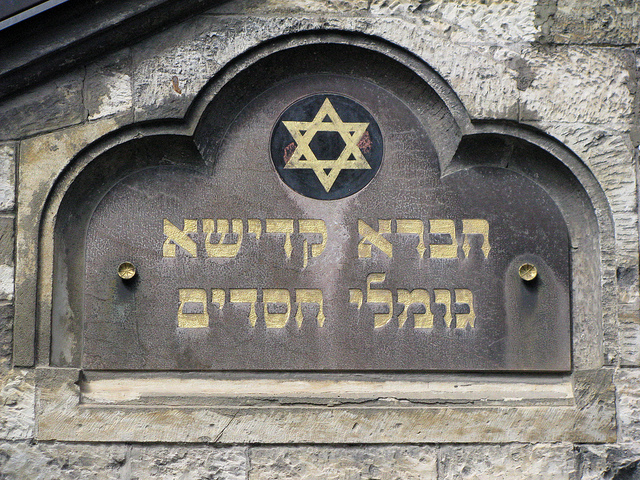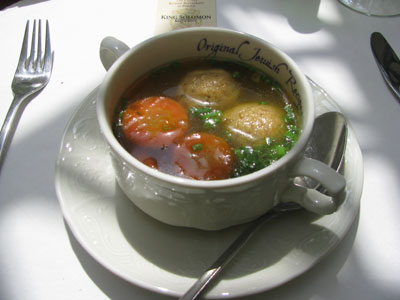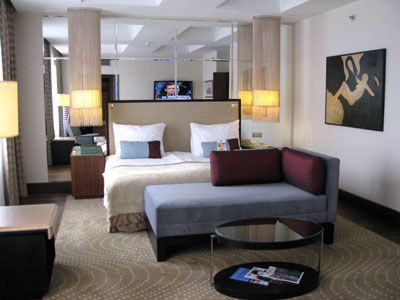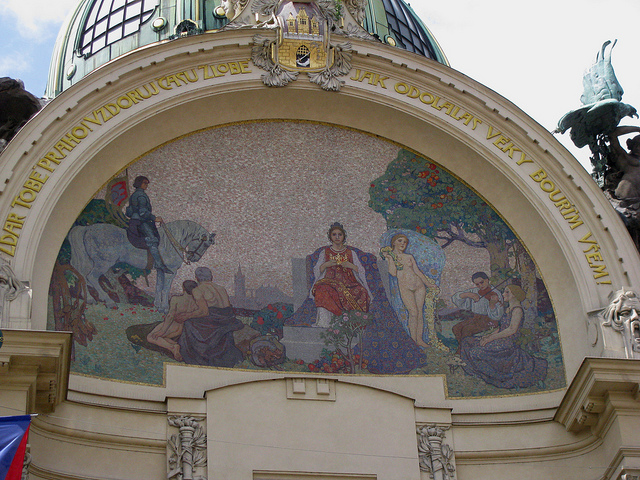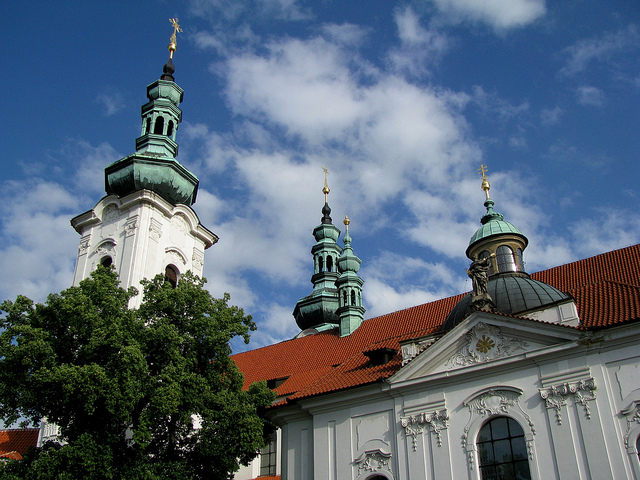One of the most celebrated figures of Prague’s Jewish history is Mordecai Maisel, the Jewish Mayor, who became the financial advisor of Emperor Rudolph II. He built the Jewish Town Hall in 1586 in Renaissance style as well as the Maisel Synagogue which opened in 1592. Both of these buildings still stand today.

The Maisel Synagogue
Around the same time another figure played a critical role in Prague’s Jewish Quarter: Rabbi Loew was an important Jewish scholar, mystic and philosopher. Legend says that Rabbi Loew created a golem, a living being, from clay which was intended to protect the Jews from anti-Semitic attacks. Rabbi Loew is immortalized in a statue that adorns the new City Hall of Prague.

The statue of Rabbi Loew on Prague’s new city hall
Habsburg Emperor Josef II improved the living conditions of the Jews with the Toleration Edict of 1781 which allowed for greater religious freedom, and in the mid 1800s the quarter was renamed “Josefstadt” (German) or “Josefov” in honour of this emperor.

Architectural details in the Jewish Quarter
By the late 19th century the hygienic and sanitary conditions in the Jewish Quarter had become unbearable, and the municipal authorities decided to demolish the entire area and reconstruct it with new apartment buildings between 1893 and 1912. Only the Jewish Cemetery, the Old Jewish Town Hall and six synagogues were left of the original Jewish Ghetto.

Today the Jewish Quarter is one of the most popular residential areas in Prague
As a result of this reconstruction, Prague has one of the most stunning collections of Art Nouveau buildings in Europe, along with Paris and Vienna. Despite recurring anti-semitic events, Prague was a hotbed for Jewish artists and writers in the early 20th century Notable authors included Franz Kafka, Max Brod, Rainer Maria Rilke and Franz Werfel. Many of these writers were German speakers of Jewish background who were strongly assimilated into mainstream culture and did not participate in Jewish religious life.

Prague was one of the centres of Jewish culture
This blossoming of Jewish creativity came to a sudden end in the 1930s when German troops marched into Prague and made the city the capital of the Nazi Protectorate of Bohemia and Moravia. Almost all of the Jewish inhabitants of this region were transported into the Theresienstadt concentration camp (today’s Czech town of Terezin) and later to the Auschwitz extermination camp. Of roughly 82,000 Jews that were deported from the Protectorate, only about 11,200 survived.

Golems for sale
All over Europe, the Nazis destroyed most Jewish institutions and synagogues, but Hitler decided to leave Prague’s Jewish Quarter intact as a “museum to an extinct race”. This is the reason why Prague’s six synagogues and the Jewish cemetery are still in existence today.

Ornamented fence of the Jewish Cemetery
When survivors returned after the war, they often encountered a hostile environment and difficulties in reclaiming their property. As a result many Czech Jews immigrated to Israel and overseas in the post-year wars. Today the Jewish population in the Czech Republic is small, and the Jewish community in Prague only has about 1600 members.

Inside the heart of Prague’s Jewish Quarter
Walking west from the 16th century Pinkas Synagogue, which holds a memorial to the martyrs of the Holocaust, we walked west on Maiselova Street towards the Vltava River where we stopped at the Rudolfinum, a classical building that opened in 1884 and today houses the Czech Philharmonic Orchestra. Richard explained that the building has phenomenal acoustics and is also home to a gallery.

The Rudolfinum, a magnificent concert hall
